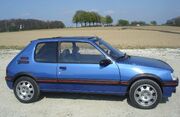
Peugeot 205 GTI
Hot hatch was originally an informal automotive industry term, shortened from hot hatchback, initially coined by the British motoring press in 1984, for a high-performance derivative of a car body style consisting of a three- or five-door hatchback automobile.
Vehicles of this class are based on family-oriented cars (automobiles), and are equipped with an uprated more powerful internal combustion engine, improved suspension, and may also include additional 'aerodynamic' body parts and larger wheels and tyres. Front-mounted petrol engines, together with front-wheel drive, is the most common powertrain layout, although diesel-powered and four-wheel drive hot hatches are also available.
Origination of the term[]
The term hot hatch gained widespread use during the 1980s in the UK, first as 'hot hatchback' by 1983 and then shortened to 'hot hatch' in the motoring press in 1984,[1] and first appeared in The Times in 1985,[2] and is now commonly and widely accepted as a mainstream, if still informal term. It is retrospectively applied to cars from the late 1970s but was not a phrase used at the time.[3]
The term is more popular in Europe, due to the popularity of the hatchback configuration and is also used in parts of the Middle East. Within the United States, hot hatches are classified along with saloons and small coupes as sport compacts and elsewhere the term sport sedan is often used. The term is not in wide use in Australia and Oceania despite the popularity of the hatchback in this region.
Some sports cars are hatchback in form, but as they are not upgraded small family cars, they are not classified as hot hatches. Cars such as the Porsche 928, Reliant Scimitar GTE and Ferrari FF have not been classified in print as hot hatches.
Development of the hot hatch[]
The car most often considered, albeit incorrectly, to have started the 'hot hatch' genre is the 1976 Volkswagen Golf GTI, announced at the 1975 frankfurt Motor Show.[4] Some cite the first true hot hatch as the Alfa Romeo Alfasud which gained the sporty TI version in 1973, but it was not a hatchback until 1981.[5] The Renault 5 Alpine first went on sale in May 1976 and pre-dated sale of the Volkswagen Golf GTi by two months.
The original 1974 version of the Volkswagen Golf was in mass production at this point, and the addition of a higher performance 1.6 litre fuel injected engine, sharper handling, and sports-focused marketing - found the birth a huge market for small, practical cars that still had excellent performance. The Golf GTI enjoyed a short run of unparalleled success, but by the early 1980s, car manufacturers worldwide were racing to market with their own alternatives. Notable big-sellers in the early days were the Peugeot 205 GTI, Ford Escort XR3, (and Vauxhall Astra GTE in United Kingdom).
By the end of the 1980s, the hot hatch had taken its place across Europe, and was pushing into other worldwide markets. The brief heyday of Group B rallying pushed the hot hatch genre to its limits, and small numbers of ultra-high performance variants were manufactured to comply with the rally rules (often termed "homologation specials"). These enthusiasts vehicles represented a brief, extreme branch of the hot hatch, and included such notable vehicles as the Lancia Delta, Peugeot 205 T-16 and MG Metro 6R4.
The hot hatch in North America[]
- Main article: Sport Compact
Before the Volkswagen Rabbit (the North American version of the Golf) was introduced in GTI form in September 1982 as a 1983 model year, sports versions of family hatchbacks were little more than cosmetic upgrades of the basic models, typified by alloy wheels and body decals. The introduction of the GTI in the United States and Canada quickly led the American and Japanese manufacturers to produce models worthy of competing with Volkswagen, and these cars became known as Sport Compacts.
Ford offered the Escort GT and near-identical Mercury Lynx XR3. Chrysler offered the Carroll Shelby prepared turbocharged Dodge Omni GLH in 1985 to 1986 with 146 hp (which was reputed to stand for "Goes Like Hell"[6]), and in 1986 to 1987 the intercooled GLHS (Goes Like Hell Somemore). General Motors offered a few sports version of its J-car hatchbacks, including the Chevrolet Cavalier Z24 After 1995, however, the J-chassis Pontiac Sunfire GT and Chevrolet Z24 were offered only as two-door coupés.
Toyota offered the Corolla FX-16, and Honda introduced the Civic S (later called the Si when that model gained fuel injection). The Honda Civic was the benchmark for Japanese hot hatches in America even though this market never received the top spec Civic Type-R, but when the line was redesigned for 2006, the new Si came in coupé form only; the Civic hatchback was no longer available in the U.S. in any form. The first generation Acura Integra (1986–1989), offered with a 1.6 fuel injection multivalve engine, too can be considered as a hot hatch, despite its liftback bodystyling. However the 5-door integra was discontinued after the '89 modelyear and the final Acura RSX was rather sold as a sports coupe, than as real hot hatch.
Warm hatch[]
As hot hatches gained more power and performance during the 1990s and 2000s, the term warm hatch started to be used to denote a junior version of a hot hatchback. Warm hatches still offer improved performance whilst retaining the practicality of the standard derivatives and attracting lower insurance premiums.[7] Warm hatches can be expected to have more muted styling features than their hot hatch cousins, they will often lack items such as front splitters and racing style bucket seats. Whilst having improved performance, warm hatches are less powerful than the hot hatch version of the car, typically more than 100 bhp (75 kW), but less than 150 bhp (112 kW).[8]
Hot hatches before 1980[]
Until 1980, the Volkswagen Golf dominated the hot hatch market segment in some markets. However, competition was not entirely limited to non-hatchbacks, the Mini, and race-inspired enthusiasts' vehicles such as the Vauxhall Chevette HS. The Sunbeam Ti offered 99 bhp (74 kW/100 PS) and brisker acceleration than the Golf and was especially popular in the UK market. The Sunbeam Lotus offered a then astonishing 140 bhp (104 kW/142 PS) and a 0-60 mph time of around 6.8 seconds, but like its smaller Ti sibling was far from the friendly and benign all-rounder that the Golf was.
Though the Golf GTI was one of the few cars with engines larger than 1.4 litres and with more than 100 horsepower (75 kW/101 PS), other hatches were on their way to becoming "hot". Also, cars such as the Hillman Imp or the Simca Rallye, while having saloon bodies, were small enough to be considered direct ancestors of the hot hatch.
European-market pre-1980 hot hatches[]
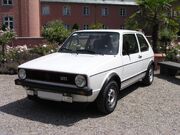
Example of a hot hatch before 1980, the Golf GTI
The examples listed below originate from the European motor manufacturers, and were primarily destined for European markets, although some examples were exported to further regions:
- Alfa Romeo Alfasud Ti (became a proper hatchback in 1981)
- Autobianchi A112 Abarth (1975)
- BMW 2002 tii Touring
- Chrysler Sunbeam Ti (1978)
- Fiat 127 Sport
- Ford Fiesta S 1.3 L OHV (US models Fiesta Sport with 1.6 L Kent)
- Peugeot 104 ZS / ZS Rallye / ZS2
- Renault 5 Alpine/Gordini (1976)
- Simca 1100 TI
- Talbot Sunbeam Lotus (1979)
- Vauxhall Chevette HS (1978)
- Volkswagen Golf Mk1 GTI (1975)
North American-market pre-1980 hot hatches and sport compacts[]
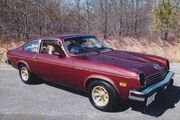
Chevrolet Cosworth Vega Twin-Cam
- Chevrolet Vega Cosworth
1980–1990 — the first generation[]
The first generation of hot hatches included the following notable models:
European-market 1980–1990 hot hatches[]
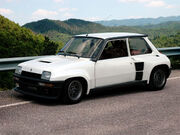
Renault 5 Turbo
As above, these examples primarily originate from the European motor manufacturers, although the Japanese manufacturers were starting to make inroads into this sector. These were primarily destined for European markets, although some examples were exported to further regions:
- Alfa Romeo 33 1.7 16v
- Autobianchi A112 Abarth
- Citroën AX Sport / GT
- Citroën BX GTi and GTi 16v
- Citroën Visa Chrono / GT / GTi / 1000 Pistes
- Daihatsu Charade GTti
- Fiat 127 GT
- Fiat Uno Turbo i.e.(European) / SR 1.6 (Brazil)
- Fiat Ritmo/Fiat Strada 105 TC / Abarth 125 TC / Abarth 130 TC
- Ford Fiesta XR2 / XR2i / RS
- Ford Escort XR3 / XR3i / RS Turbo
- Honda Civic GTi
- Lancia Y10 1.0 Turbo / 1.3 GT i.e.
- Lancia Delta HF Turbo/Integrale
- Mazda 323 GTX 4WD Turbo/Turbo 4x4
- Mitsubishi Colt 1600 Turbo
- MG Metro 1300/Turbo
- MG Maestro 1600 / EFI / Turbo
- Nissan March / Nissan Micra Super Turbo (JDM only)/1.3 SuperS
- Opel Corsa/Vauxhall Nova SR / GT / GSi / GTE / JOY
- Opel Kadett/Vauxhall Astra GT / SRi / GSi / GTE
- Peugeot 205 Rallye / GTI 1.6 / GTI 1.9
- Peugeot 309 GTI / GTI16
- Renault 5 Alpine/Gordini Turbo
- Renault 5 Turbo/Turbo 2
- Renault 11 Turbo
- Renault 5 'Supercinq' GT Turbo.
- Toyota Corolla GT-i 16
- Volkswagen Polo G40
- Volkswagen Golf GT / GTI / GTI 16v / G60
North American-market 1980s hot hatch sport compacts[]
- Acura Integra 1.6 DOHC
- Mercury Lynx XR3
- Toyota Corolla GT-S, a.k.a. Toyota AE86
- Toyota Corolla FX-GT, Twin Cam
Rest of the world-market 1980s hot hatches[]
- Ford Laser TX3/TX3 Turbo/TX3 Turbo 4WD
- Honda City Turbo/Turbo II
- Suzuki Cultus GTi / Suzuki Swift GTi
1990–2000 — the second generation[]
With the Golf getting slower, heavier and more expensive to match its target market, space opened for a new breed of hot hatches in the 1990s:
European-market 1990–2000 hot hatches[]
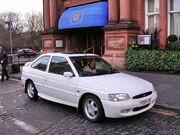
1990s hot hatch, Ford Escort RS2000
Once again, these examples primarily originate from the European motor manufacturers, again with the Japanese makers making an impact too, and were primarily destined for European markets, although some examples were exported to further regions:
- Alfa Romeo 145 / 146 Cloverleaf/Ti
- Citroën AX GTi
- Citroën Saxo VTR / VTS
- Citroën ZX Volcane / 16s / 16V
- Citroën Xsara VTS
- Daihatsu Charade GTti
- Fiat Punto GT
- Fiat Tipo Sedicivalvole
- Fiat Uno Turbo i.e. MkII
- Ford Fiesta XR2i / RS 1800 / RS Turbo
- Ford Puma 1.7 VCT/Racing Puma
- Ford Escort XR3i / RS 2000 / RS 2000 4x4 / RS Cosworth
- Honda Civic CRX/VTEC/VTi/SiR-II/Type R
- Mazda 323 GTX 4WD / GT-R
- Mitsubishi Colt GTi
- Nissan Sunny GTi / GTi-R
- Nissan Almera GTi
- Opel/Vauxhall Corsa GSi / SRi 16v
- Opel/Vauxhall Astra GSi / SRi 16v
- Peugeot 106 Rallye / XSi / GTi / S16
- Peugeot 206 S16 / GT / GTI / RC
- Peugeot 306 S16 / GTi-6 / Rallye
- Proton Satria GTi
- Renault Clio Williams / 16V
- Renault 19 16v and Renault Sport
- Rover Metro (114) GTi / GTa
- Rover 220 GTi / Vi
- SEAT Ibiza GTi / GT 16v / Cupra
- Suzuki Baleno GTi
- Suzuki Ignis Sport
- Toyota Starlet Turbo
- Toyota Corolla GTi
- Volkswagen Polo Mk3 G40
- Volkswagen Golf GTI/VR6
North American-market 1990s hot hatches and sport compacts[]
- Ford Escort GT
- Acura Integra GSR/Type R
- Nissan Pulsar GTi
- Nissan Pulsar N14 SSS
Rest of the world-market 1990s hot hatches[]
- Honda Civic GTi
- Suzuki Cultus/Swift GTi
Recent generations — hot hatches since 2000[]
The late 1990s saw a gradual shift away from lightweight, economical small cars - and the introduction of new market category-blurring vehicles. In the 2000s, new hot hatch "class" was born, engine outputs grew up to well beyond 200 PS (147 kW/197 bhp), and by 2010 Ford and Subaru challenged each other with the Ford Focus RS 500 (350 PS (257 kW/345 bhp)) and Subaru Cosworth Impreza STI CS400 (400 PS (294 kW/395 bhp))[9]
Like the decades before, most hot hatches were of European origin, with competitive models principally from France, Italy and Germany. Outside of Europe, Japan is a major exporter of hot hatches. Several hot hatches are exported to Australia and North America where they compete with local sport compact models.
Due to the growing performance of hot hatches, the term warm hatch was used for the less powerful, yet still sporty, hatchbacks around the 150 PS (110 kW/148 bhp) mark.[10]
Post-2000 European-market hot hatches[]
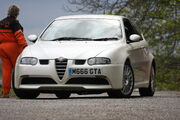
A hot hatch of 2000s, Alfa Romeo 147 GTA
- Alfa Romeo 147 2.0 TS/GTA
- Alfa Romeo Mito Quadrifoglio Verde
- Alfa Romeo Giulietta Quadrifoglio Verde 1750 TBi
- Audi A1 185ps
- Audi S3/Audi RS3
- BMW 1 Series 120i/130i/135i
- Citroën Saxo VTR/VTS
- Citroën C2 VTS/GT
- Citroën DS3 Racing
- Citroën Xsara VTS
- Citroën C4 VTS
- Fiat 500 Abarth
- Fiat Punto HGT
- Fiat Abarth Grande Punto
- Fiat Bravo HGT
- Fiat Bravo (2007) T-JET 150, MultiJet 165 and MultiAir Turbo
- Fiat Stilo Abarth
- Ford Fiesta ST (XR4 in Australia)
- Ford Focus ST170/Ford Focus RS
- Honda Civic Type R
- Lancia Delta Hard Black Edition
- Mazda3/Axela SP23/Mazdaspeed3/3 MPS
- MG ZR 160
- MG ZS 180
- MINI Cooper S/John Cooper Works
- Mitsubishi Colt CZT 1.5 Turbo / Ralliart Version-R
- Nissan Micra 160 SR
- Opel/Vauxhall Corsa SRi 1.8 16v / OPC
- Opel/Vauxhall Astra SRi Turbo / OPC / OPC Turbo / VXR
- Peugeot 206 S16/GTi 138/RC/GTi 180
- Peugeot 207 GTi
- Renault Clio RS 2.0/V6
- Renault Twingo Renaultsport 133
- Renault Mégane Renaultsport (full name Renault Mégane Renault Sport)
- Rover 25 GTi
- SEAT Ibiza 1.8T Cupra / FR
- SEAT León Cupra R 2.0 TFSI/FR 2.0 TFSI/FR TDi
- Škoda Fabia vRS
- Škoda Octavia vRS
- Smart Forfour Brabus
- Subaru Impreza WRX and STI
- Toyota Corolla/RunX/Allex VVTL-i T-sport,Compressor T-sport/RS180(Sportivo in Australia)
- Volkswagen Lupo GTI
- Volkswagen Polo Mk4 GTI
- Volkswagen Golf Mk5 R32 / GTI
- Volkswagen Golf Mk6 GTI / R20
- Volkswagen New Beetle RSI
- Volvo C30 T5
Post-2000 Warm hatch examples[]
- Fiat Panda 100HP
- Ford SportKa
- Ford Fiesta Zetec S, ST [8]
- Mini Cooper [8]
- Nissan Micra 160 SR
- Peugeot 207 GT [11]
- Renault Twingo RS 133
- Renault Clio Dynamique S 138 [12]
- Renault Mégane GT
- Suzuki Swift Sport [8]
- Toyota Yaris SR [13]
- Volkswagen Golf GT
- Vauxhall Corsa SRI
Post-2000 North American-market hot hatches and sport compacts[]
- Acura RSX Type-S (North America)
- Ford Focus SVT
- Honda Civic SI
- Mazda Mazdaspeed3
- MINI Cooper/Cooper S
- Volkswagen Golf GTI
- Subaru Impreza WRX and STI
Post-2000 rest of the world-market hot hatches[]
- Daihatsu Sirion Rally 2/4 (Sirion GTvi in Australia)
- Ford Focus XR5 (Australia)
- Holden Astra HSV VXR (Australia)
- Proton Satria R3 GTi 1.8/16v
- Suzuki Ignis Sport
- Toyota Vitz Echo Sportivo (Australia)
See also[]
References[]
- ↑ (2008-01-18) Motor 166. Books.google.co.uk. Retrieved on 2011-03-23.
- ↑ The Times, Friday August 16, 1985; pg. 21; Issue 62218
- ↑ Autocar 5000th Road Test edition March 2011
- ↑ "Evo November 2010". Evo.co.uk (2010-11-22). Retrieved on 2011-03-18.
- ↑ "Hot Hatch debate". PistonHeads.com (2007-05-16). Retrieved on 2008-03-19.
- ↑ "Edmunds.com". Edmunds.com (2010-02-26). Retrieved on 2011-03-18.
- ↑ "Daily Mirror 4 January 2008". Mirror.co.uk (2008-01-04). Retrieved on 2011-05-12.
- ↑ 8.0 8.1 8.2 8.3 "Warm hatchbacks" (November 2006) "Ford Fiesta ST v Mini Cooper v Suzuki Swift Sport" Auto Express
- ↑ "Top Gear hot hatch power league 9 December 2010". Topgear.com (2010-12-09). Retrieved on 2011-03-31.
- ↑ "Ford Fiesta ST v Mini Cooper v Suzuki Swift Sport". Autoexpress.co.uk (2006-11-29). Retrieved on 2011-03-31.
- ↑ "Peugeot 207 GT" (September 2006) "First Drives: Peugeot 207" Auto Express
- ↑ (April 2007) "Renault Clio 138" evo
- ↑ (2 June 2007) "Warm under the collar" The Telegraph
| This page uses some content from Wikipedia. The original article was at Hot hatch. The list of authors can be seen in the page history. As with Tractor & Construction Plant Wiki, the text of Wikipedia is available under the Creative Commons by Attribution License and/or GNU Free Documentation License. Please check page history for when the original article was copied to Wikia |